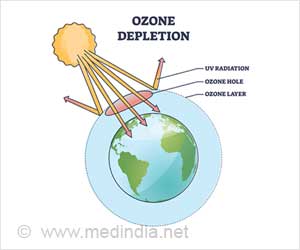Climate change profoundly affects global rose cultivation. Rising temperatures, and heightened pest and disease pressures cause heat stress.

Climate change threatening Valentine’s Day roses
Go to source) Nearly 60 percent of all exported roses come from five countries in the global south which face growing dangers from extreme weather. Three in East Africa -- Kenya (19.1 percent), Ethiopia (5.1 percent) and Uganda (1 percent); and two in South America -- Ecuador (21.2 percent) and Colombia (12.4 percent).
‘The regions in South America where roses are grown as Valentine's Day gifts face similar climatic threats. #valentinesday #rose #climatechange’





The report highlights that East Africa already faces erratic temperatures and extended droughts, and extreme temperatures are expected to get both hotter and more frequent -- something that could make rose growing highly challenging. Roses also need plenty of water. The report cites a study which showed that droughts in the area between 2020 and 2022 were found to have been more than 100 times more likely and more severe because of climate change.
Climate Challenges Threaten Rose Cultivation
In Ecuador and Colombia, roses tend to be grown in high-altitude Paramo ecosystems, with cooler temperatures and good rainfall. As the climate changes, temperature increases are expected to be highest in the Andean regions, including the Paramo, and extreme temperatures (number of days above 35 degrees Celsius) are projected to rise significantly. Glacier retreat is also a major issue in the tropical Andes, with at least 30 percent of their area lost between 1990 and 2020. This risks water scarcity which poses a major threat to a water-intensive industry, like rose growing.The English Rose is under threat too.The British love of roses is well known and the UK is the fourth largest importer of roses in the world. However, climate change also poses a threat to those grown at home. On average, rose plants in the UK now start to flower about a month earlier than would have been seen as recently as the mid-1980s, due to increased average temperatures across January to April. Increased rainfall is also a problem because of fungal diseases such as rose black spot and powdery mildew which thrive in warmer, wetter springs. Many popular varieties of rose have disappeared because of black spot disease.
David Austin’s award-winning Shropshire Lad is already being withdrawn from sale, as they lack resilience to pests, such as aphids, and diseases which are evolving with the changing climate conditions. The report warns that without government action to cut emissions and provide financial support to rose growers and others having to adapt to the climate crisis, millions of livelihoods will be at risk.Horticulturists, florists and climate experts have expressed concerns about the findings in the report.
Charles Shi, Botanical Horticulturist at Kew Gardens, said: “Climate change has significant impacts on rose cultivation around the world. The effects of rising temperatures, changing precipitation patterns, and increased pest and disease pressure can lead to heat stress, reduced flower quality, disrupted flowering seasons, and damage to rose plants. “Here at the Royal Botanic Gardens, Kew, horticulturists and scientists are working to collect and analyse scents from species roses. This research project will allow us to examine pollinator types associated with these species, and map the change in pollinator populations from different habitats, associated with varying wild rose numbers.
“Research such as this, along with directly addressing climate change where possible, can play a part in preserving suitable regions for rose cultivation, protecting biodiversity and pollinators, promoting sustainable practices in rose production, and safeguarding the economic benefits associated with the industry.”
Advertisement
We’ve seen increased disease pressure due to unusual weather patterns, sometimes we have excessive hot weather which sees a jump in the number of pests, and other times unusually low temperatures which increases fungal infections, reducing yields.“Another example is availability of water for irrigation. While this has not yet affected us since our source of water from Lake Naivasha has been very stable the last 10 years, it is a concern that with climate change such a source could be threatened.
Advertisement
Reference:
- Climate change threatening Valentine’s Day roses - (https://allianceforscience.org/blog/2024/02/climate-change-threatening-valentines-day-roses/)









